Principal Curator in Charge of Invertebrate and Plant Palaeobiology, Giles Miller shares his diary entries over the course of his week.

Giles Miller working in the collections
There’s always incredible variety in the work of a curator, with each day being different from the next. Much of this work goes on behind the scenes at the Museum. It’s important to share these activities to highlight the importance of the collections and the work we do, and to inspire those looking for a future career working for museums.
Monday – Preparations for collections move

Foraminiferal images from the scanning electron microscope taken by my late colleague Dr John Whittaker.
A major focus of our current work is preparing the collections for the move to Thames Valley Science Park in Reading. This includes both the specimens and the documentation that goes with them. Today, I am examining some images of specimens taken by my late colleague Dr John Whittaker with a scanning electron microscope, before sending related documents to the archives.
Part of the role of a curator involves interpreting the annotations various collectors used in their documentation. An example of this is an associated collection of scanning electron microscope stubs that are prefixed “FB”. My team were excited when we discovered from some documents filed away that FB stands for “Famous Book” and refers to a synoptic volume of British Ostracod Faunas, which are a group of crustaceans also known as seed shrimps, that Whittaker published with several others in 1989.
Tuesday – Collaboration at future site in Reading
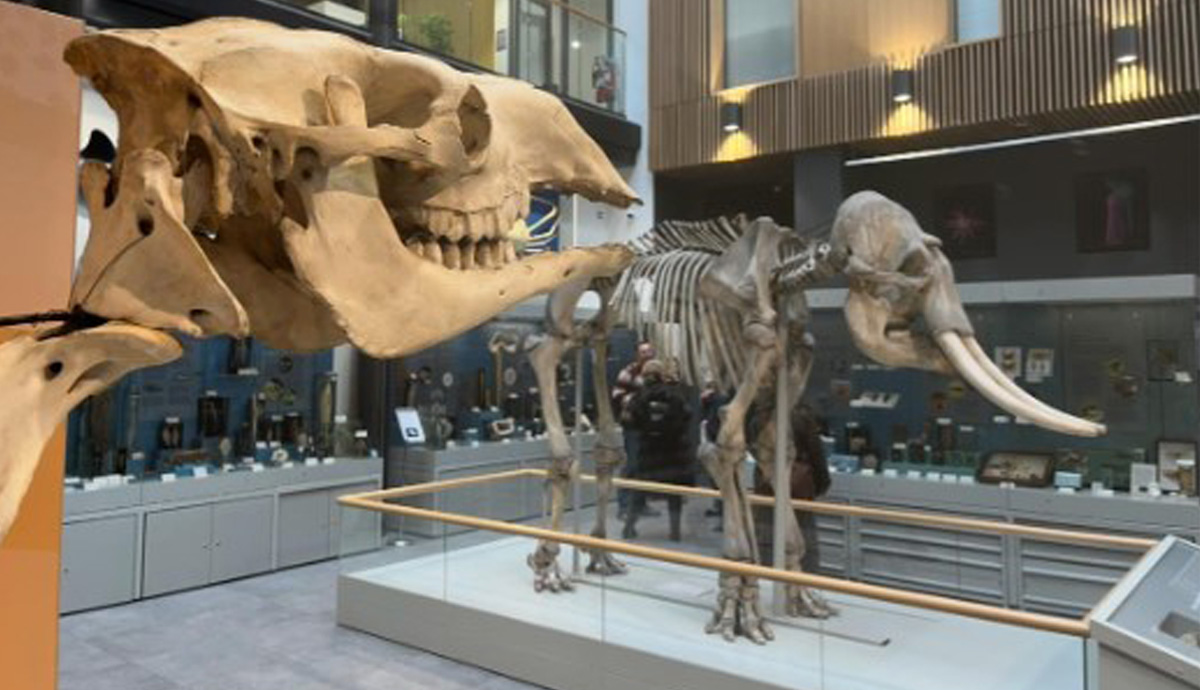
Today, I travelled to Reading for a one-day collaboration meeting where some of my team were giving talks about their work on evolution. During the meeting, I got the chance to take a quick look at some of the displays at the Cole Museum of Zoology and catch up with artist Florian Rothmayr to discuss various collaborative opportunities. I invited him to the Natural History Museum to look at some of our microfossil models and the moulds from which various other palaeontological casts have been made.
One of the talks at the meeting highlights new postgraduate opportunities for funding projects. I have been unsuccessful in a previous application, so this talk gives me some new pointers for a revised application to get a funded studentship. I make good use of the hour and ten minute train journey from Clapham to Reading to get quite a lot of computer work done.
Wednesday – Team planning
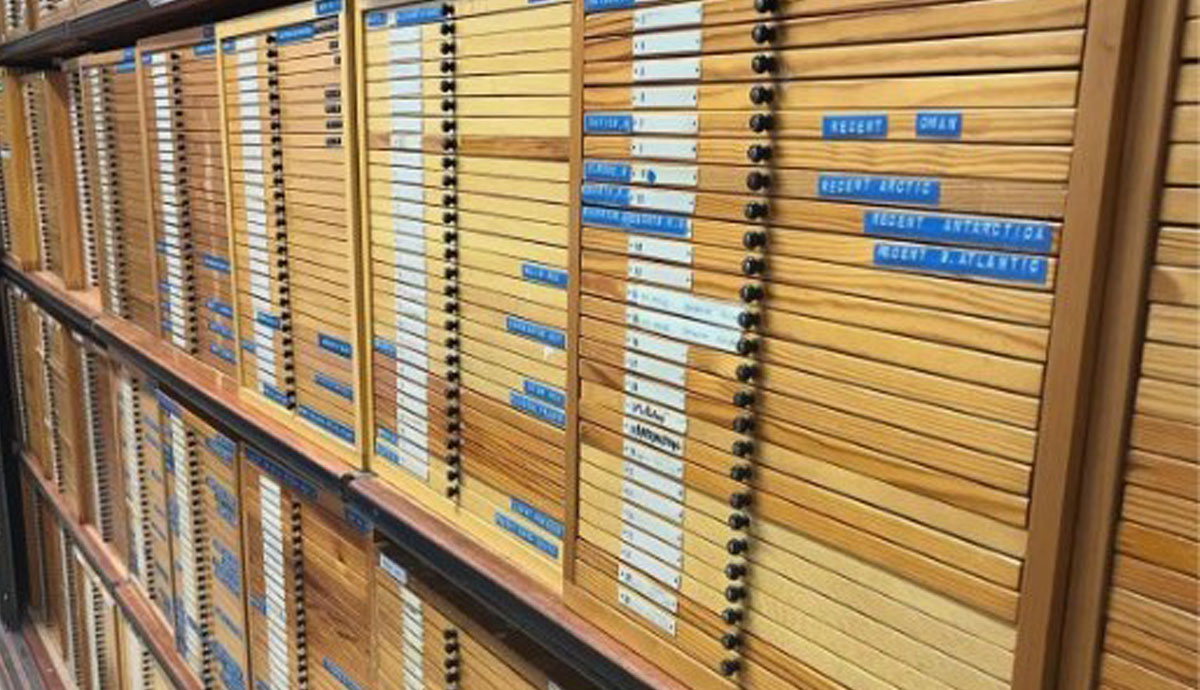
Slide cabinets from the Aberystwyth Collection
Part of my role as a Principal Curator in Charge involves leading a team of nine curators in developing a divisional curation plan and deciding on priority areas for allocating additional resources in preparation for the move.
Today, I chair our team meeting and pass on details from senior curation and science team meetings that I have attended over the last couple of weeks. We are also planning for our next reporting year that starts at the beginning of April. There’s so much to do that it’s difficult sometimes not to get sidetracked by the “shoulds and coulds” rather than focus on the “musts”.
I’m responsible for planning how the collection grows. So I also spent some time organising a trip to collect the final cabinets from an acquisition that first arrived in 2000 - the Aberystwyth Microfossil Collection. One of our acquisition priorities is to ‘illuminate the collections we already have’. This is the final part of this major collection and contains some important British microfossil material that underpins some of the published specimens we have in our collections.
Thursday – New staff handover of collections knowledge
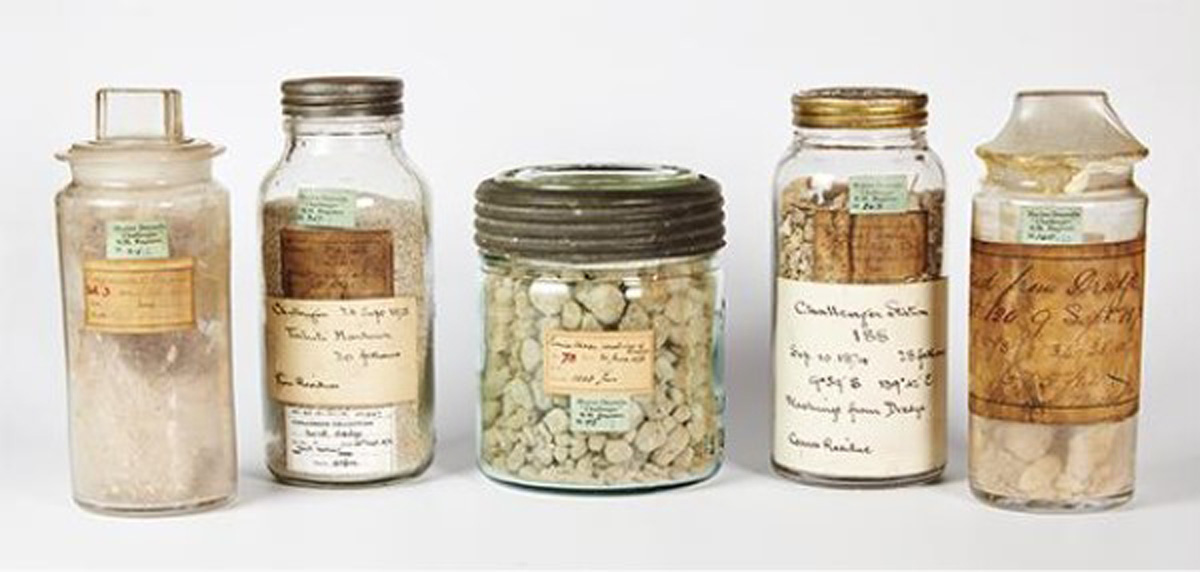
Sediment bottles from the H.M.S. Challenger collection
I’m at our off-site storage centre today, meeting the new Petrology (Rocks) Curator, Aimee Smith. We jointly manage the Ocean Bottom Deposit collection, which is also earmarked to move to the new site in Reading. In a previous museum role, I also managed the Rock Collection, so I gave her a handover tour of the off-site collections so that she can take over their management.
The collections at the storage centre include the H.M.S. Challenger Sediments Collection. A paper on this collection is almost ready for submission so I spend some time tidying up some loose ends in our curatorial database and make some notes to enhance details of some of the figured images from the collection.
Friday – Interesting visitors
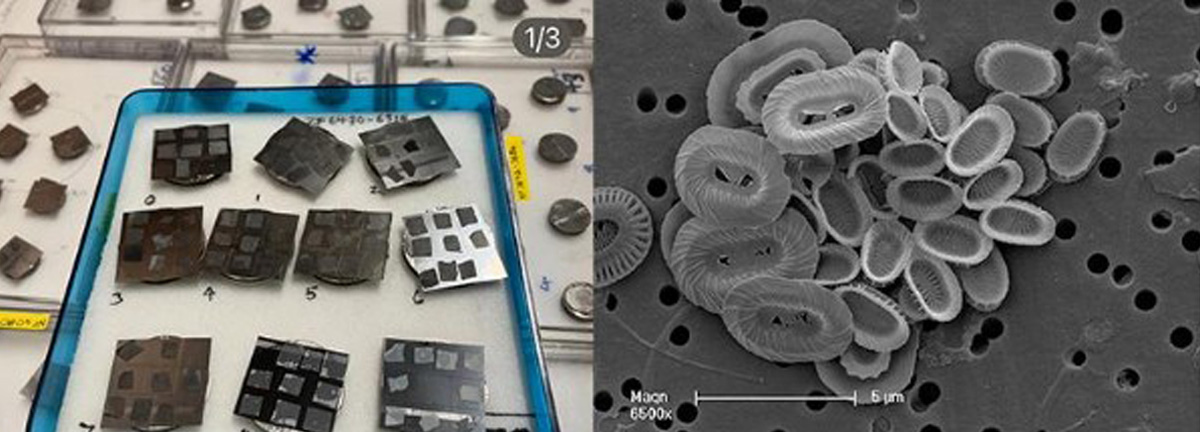
Nannofossil stubs and specimens
I’ve only just arrived at the museum and there’s already a knock on the door from one of the museum PhD students. He needs to borrow a scanning electron microscope stub of some material collected by one of his supervisors, Dr Jeremy Young. The nannofossil specimens are so small that a high-powered microscope is needed to magnify over 1,000 times. It is almost impossible to re-locate them.
Later that morning my office turns into an artist studio for the rest of the day. A former staff member, Claire Venables, is painting some of the Challenger Glassware. I’ve seen some of her glassware paintings on Instagram and encouraged her to make a study of the Challenger bottles.
After spending my career looking after the collections, I love it when they are used for a wide variety of activities that make them more than just items held in storage. I really enjoy sharing our collections with both staff and the wide variety of visitors that engage with our work.
I am also passionate about sharing the wonder of being a curator in the hopes that this could inspire a new generation of scientists to pursue a career they might not have considered before. This spring, I’ll be taking part in Generation Hope - an annual programme led by us and young climate leaders from around the world. If you want the opportunity to come and talk to me and other Museum Scientists, find out more about the events we will be taking part in online.
Contributor
Giles Miller is our Principal Curator in Charge of Invertebrate and Plant Palaeobiology. Find out what else Giles is working on.
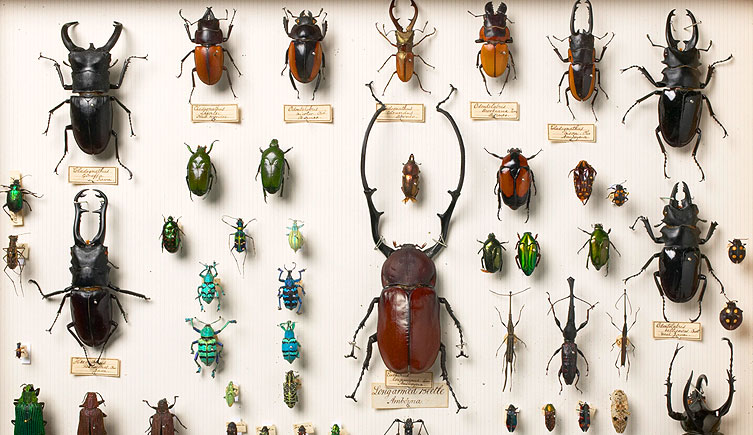
Collections
Our 80 million objects span 4.5 billion years, from the formation of the solar system to the present day.
Don't miss a thing
Receive email updates about our news, science, exhibitions, events, products, services and fundraising activities. We may occasionally include third-party content from our corporate partners and other museums. We will not share your personal details with these third parties. You must be over the age of 13. Privacy notice.
Follow us on social media